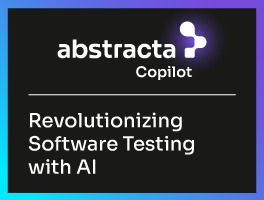Safeguard operations and critical data with a disaster recovery software testing plan built for prevention and rapid response when disaster strikes.


Overview: The Business Impact of Testing
Disaster recovery software testing protects enterprises from financial loss, compliance penalties, and reputational harm. The true cost emerges when downtime extends, threatening revenue and customer trust.
Because these risks escalate quickly, decision makers need confidence in recovery capabilities. Proactive testing validates the disaster recovery (DR) plan, while reactive testing supports leaders during active disruption.
AI-driven test agents accelerate both approaches—simulating disaster scenarios before they occur and triaging recovery actions when disaster strikes.
Without disciplined validation, recovery costs rise, business operations stall, and the disaster recovery process becomes unpredictable, reducing the organization’s ability to continue operations across critical systems.
Key Takeaways: What Leaders Should Note
- Resilience protects business value: Disaster recovery testing connects prevention with rapid recovery, making resilience measurable in financial, operational, and reputational terms.
- Plans require dual focus: A disaster recovery plan must be validated proactively and applied reactively when disruption occurs.
- Scenarios strengthen readiness: Testing various disaster recovery scenarios uncovers weaknesses in systems, storage, and replication pipelines before or during incidents.
- Metrics drive decisions: Recovery time objective and recovery point objective guide acceptable thresholds in planning and in live recovery.
- AI enables clarity under pressure: Test agents speed analysis, filter results, and provide insights for both proactive and reactive decision making.
- Preparedness limits disruption: Business continuity improves when prevention and real-time recovery are embedded into the organization’s culture..
Partner with Abstracta to create a disaster recovery testing plan that protects you before disruption and guides you when disaster strikes.
Book a meeting with our experts.
7 Steps to a Strong Disaster Recovery Testing Plan
1. Align Testing With Business Continuity Goals
Proactive: The IT disaster recovery plan must support recovery objectives, recovery strategies, and recovery plans across production systems and multiple locations.
Reactive: If disruption is active, align urgent recovery procedures with business priorities before execution to protect operations and revenue.
2. Quantify the Cost of Downtime
Proactive: Business impact analysis ties downtime to measurable financial loss. Metrics like recovery time objective and recovery point objective connect testing process to financial risk and recovery performance.
Reactive: If a disruption is in progress, quantify the impact of lost data and system failures quickly to guide triage and executive updates.
3. Validate Compliance and Regulatory Requirements
Proactive: Every organization needs an IT DR plan aligned with global standards. Testing recovery procedures reduces risk from natural disasters, power outages, and unexpected issues.
Reactive: During an incident or audit, document actions in real time. Compliance evidence confirms that the disaster recovery process protects critical data and data security.
4. Test for Scalability and Future Growth
Proactive: Disaster recovery testing scenarios simulate production environment stress and identify vulnerabilities across IT systems, storage systems, and data replication pipelines.
Reactive: Mid-incident, validate capacity limits and failover behavior in the production environment before restoring traffic to safeguard business operations.
5. Integrate Automation and AI-Driven Testing
Proactive: Automating recovery procedures, disaster recovery testing scripts, and component test cycles lowers recovery costs and improves recovery performance across the production environment.
Reactive: When time is critical, deploy AI-driven test agents to triage failure paths, filter results, and surface the next best action.
6. Engage Cross-Functional Stakeholders
Proactive: An effective DR testing process aligns IT, legal, finance, and compliance teams with the planned testing date and disaster recovery environment.
Reactive: In a live event, assign a single decision owner and escalate cross-functionally to accelerate recovery and restore lost data.
7. Build a Continuous Testing Culture
Proactive: Organizations cannot wait until disaster strikes. Recovery strategies must include full scale testing, recovery test cycles, and periodic recovery procedures for critical systems.
Reactive: After an outage, run a short post-incident recovery test. Confirm fixes, validate data backup and data restoration, and prevent recurrence.
Types of Disaster Recovery Plans and the Role of Software Testing
Now that you have a structured testing plan, it’s important to understand the main types of disaster recovery plans that exist and where our approach strengthens them.
Enterprises rely on different disaster recovery plans, but each must be tested to confirm it works under pressure:
- Data center disaster recovery plan testing validates how quickly hardware, facilities, and on-premises infrastructure can be restored after natural disasters or hardware failures.
- Cloud disaster recovery plan testing proves that replication and failover processes recover data and services reliably in cloud environments.
- Virtualized disaster recovery plan testing checks whether virtual machines, operating systems, and applications can be restored without affecting production systems.
- Network disaster recovery plan testing simulates outages or cyberattacks to confirm that routers, switches, and connectivity can be recovered.
- Application disaster recovery plan testing exercises recovery procedures for ERP, CRM, and financial systems to confirm critical applications return to normal operations.
- Hybrid disaster recovery plan testing ensures multiple environments—cloud, on-premises, and virtual—recover consistently across multiple locations.
- Business continuity and disaster recovery plan testing integrates technical recovery with continuity objectives to prove organizations can continue operations during prolonged disruptions.
Disaster recovery software testing makes these plans actionable. Without structured testing, plans remain theory; with testing, they become measurable recovery strategies.
Our Approach: Disaster Recovery Software Testing in Action
Disaster recovery plans define what and where to recover, but only testing proves if they work. Our disaster recovery testing plan validates recovery procedures across any environment—cloud, data center, hybrid, or application-specific.
We design disaster recovery testing scenarios, measure recovery time objective and recovery point objective, and align procedures with business continuity goals. AI-driven test agents accelerate proactive validation and provide reactive insights when disaster strikes.
Our approach transforms static plans into actionable recovery strategies, giving leaders confidence in both prevention and real-time recovery.
Final Insights
Disaster recovery testing connects recovery strategies with business continuity and resilience. Testing minimizes downtime, limits data loss, and reduces recovery costs during disaster scenarios.
The strongest position is proactive preparation, yet recovery expertise remains crucial when disruption has already begun. AI-driven agents and structured practices support both paths.
Executives who adopt a consistent disaster recovery testing plan—balancing prevention with real-time recovery—strengthen the organization’s ability to continue operations and restore data confidently.
At Abstracta, our disaster recovery testing plan empowers leaders to act with clarity, validating recovery in preparation and supporting real-time response.
FAQs about Disaster Recovery Software Testing


What Is Disaster Recovery Testing In Software Testing?
Disaster recovery testing in software testing is the process of evaluating a disaster recovery plan with structured scenarios to confirm recovery strategies and maintain business continuity.
Why Is Disaster Recovery Testing Important?
Disaster recovery testing is important because it validates recovery procedures, protects critical data, and strengthens business continuity by minimizing downtime during disaster scenarios.
What Are The Five Testing Types For A Disaster Recovery Plan?
The five testing types for a disaster recovery plan are checklist reviews, simulation tests, parallel tests, full-scale testing, and component tests within the IT infrastructure. At Abstracta, we validate these strategies by running structured disaster recovery testing scenarios proactively before disruption and reactively when disaster strikes.
What Is An Example Of Recovery Testing?
An example of recovery testing is a simulated disaster scenario where hardware failures or data corruption affect production systems, and data recovery confirms restoration of normal operations.
What Should Be Tested Regularly In Disaster Recovery?
What should be tested regularly in disaster recovery includes backup systems, recovery time objectives, recovery point objectives, and recovery capabilities across a secure test environment.
What Are Common Challenges In Disaster Recovery Testing?
Common challenges in disaster recovery testing are human error, incomplete risk assessment, unclear DR plan owner roles, and weaknesses in the entire recovery process.
How Does Automation Improve Disaster Recovery Tests?
Automation improves disaster recovery tests by validating disaster recovery strategy, minimizing disruption to production systems, and enabling teams to recover data faster during business continuity and disaster events.
What Are The Best Tools For Disaster Recovery Testing Automation?
The best tools for disaster recovery testing automation are platforms that integrate AI-driven test agents, backup systems validation, and orchestration of recovery procedures across IT infrastructure.
Who Is Responsible For A Disaster Recovery Plan?
The person responsible for a disaster recovery plan is the DR plan owner, who manages recovery test evidence, oversees risk assessment, and aligns recovery strategy with IT infrastructure.
How Can AI Enhance Disaster Recovery Testing?
AI can enhance disaster recovery testing by simulating disaster recovery scenarios, filtering complex results, and giving executives clear insights to protect operations when disaster strikes
How We Can Help You


With over 17 years of experience and a global presence, Abstracta is a leading technology solutions company with offices in the United States, Chile, Colombia, and Uruguay. We specialize in software development, AI-driven innovations & copilots, and end-to-end software testing services.
We believe that actively bonding ties propels us further. That’s why we’ve forged robust partnerships with industry leaders like Microsoft, Datadog, Tricentis, Perforce, Saucelabs, and PractiTest, empowering us to incorporate cutting-edge technologies.
By helping organizations like BBVA, Santander, Bantotal, Shutterfly, EsSalud, Heartflow, GeneXus, CA Technologies, and Singularity University we have created an agile partnership model for seamlessly insourcing, outsourcing, or augmenting pre-existing teams.
Visit our Performance Testing Services page!
Contact us to improve your system’s performance.


Follow us on Linkedin & X to be part of our community!
Recommended for You
AI for Business Leaders: Strategic Adoption for Real-World Impact


Sofía Palamarchuk, Co-CEO at Abstracta
Related Posts
Devs, You Have Unit Testing All Wrong
Why you shouldn’t skip unit testing for building high-quality software If you’re a developer or work in the world of software development, you might have heard some misconceptions about unit testing. We’ll go debunking some of them one by one in this post, and maybe…
Test Strategy in Software Testing: Smarter QA Starts Here
Want to improve QA outcomes? Build a smarter test strategy in software testing with key steps, AI-enhanced tools, and a focus on quality and efficiency.
Search
Contents
Categories
- Acceptance testing
- Accessibility Testing
- AI
- API Testing
- Development
- DevOps
- Fintech
- Functional Software Testing
- Healthtech
- Mobile Testing
- Observability Testing
- Partners
- Performance Testing
- Press
- Quallity Engineering
- Security Testing
- Software Quality
- Software Testing
- Test Automation
- Testing Strategy
- Testing Tools
- Work Culture





